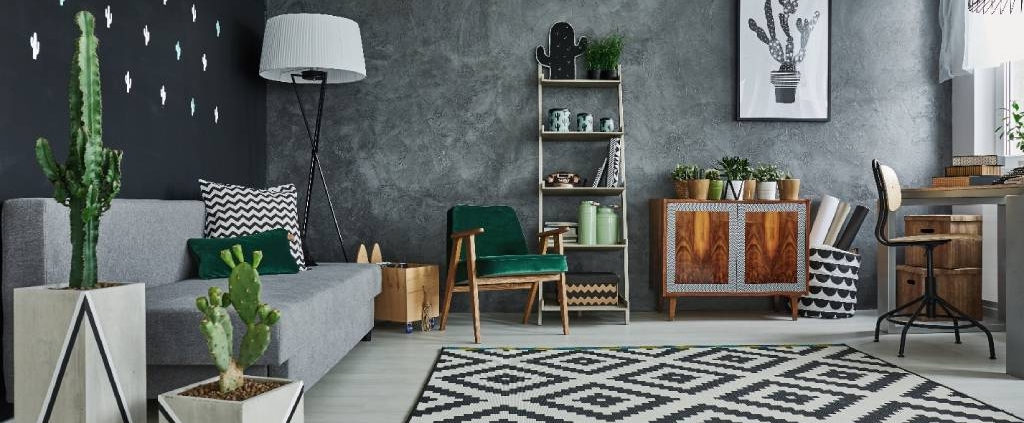10 Eco-friendly Interior Design Ideas
Design pervades. It may seem irrelevant or difficult to those not professionally involved. However, design is a part of all of our lives. It’s not just our future that’s planned. If the first items on the list strive to make our lives easier & more comfortable, the last is also tied to sustainability. The goal is to meet present needs and, more significantly, future generations’ requirements.
What Is Sustainable Design?
It helps to think philosophically about why a sustainable design is important.
Environmentally conscious design tries to eliminate harmful environmental effects. Designing or decorating your home sustainably helps reduce your carbon impact. Sustainable design aims to achieve:
- Reduce waste
- Make a healthy atmosphere
- Reduce non-renewable resource use
However, green design does not equate to sustainable design. The key is to build solutions that solve present concerns while also considering future implications. Read also Interior Design Ideas.
Overall, sustainable design is just a long-term environmental strategy. Green design, on the other hand, focuses on current challenges and is generally related with sustainable architecture. Sustainability is to reduce non-renewable resource use, waste, and create healthy, productive settings.
This year’s hot topic of sustainable design seems worth investigating. This tutorial offers interior design ideas for a more eco-friendly home.
Tips For Durable Interior Design
Following these principles would responsibly lessen our society’s negative environmental impact and build a more sustainable future.
1. Energy Efficiency
Energy use is a substantial factor to climate change. Buildings account for a large proportion of greenhouse gas emissions due to energy use. By supplying renewable, non-carbon-based energy, architects and interior designers can significantly increase a building’s energy efficiency.
Interior designers can impact heating and lighting. Because windows lose most of their heat via the glass, they must be well-insulated. Curtains and drapes should keep out chilly air and heat from the sun. The temperature of a building can be controlled by opening and closing window coverings, blinds, or shades. Carpets can retain up to 10% of a room’s heat.
Lighter hues reflect more light, whereas darker walls and furnishings require more artificial lighting. Reflective surfaces boost light in a room, reducing the need for artificial lighting.
Home automation, or ‘’green devices,” allows remote control of heating and lighting. Dimmers, for example, are ideal for areas like living and dining rooms wherever you want to control the lighting output or save energy.
2. Waste Management
When it comes to reducing waste, interior designers have such a lot of influence and must behave appropriately for sustainability. Because the planet’s resources are limited, the mentality of dumping old things and replacing it with new ideas is no longer acceptable.
Fortunately, interest in sustainable thinking is expanding, including such recycling, upcycling, or repurposing. The new normal is to repurpose outdated but still useful items rather than tossing them. Choosing synthetic materials derived from recycled trash or those can be renewed/recycled could help limit resource depletion. Using this method creates a circular manufacturing loop that efficiently reduces or eliminates waste.

3. Design Durability And Flexibility
To minimise wasting resources and items, interior designers should consider their lifespan when planning. Especially those elements that get a lot of use. Design should aim to create timeless settings.
People change, and they want their surroundings to change with them. Interior designer must consider spaces’ adaptability to changing needs of users. Flexible spaces are the keys to longevity. Choose quality rather than quantity, classic over trendy, & utility over adornment to achieve timeless.
Customizable walls, adjustable and adaptable furnishings to match the needs of the modern workplace, and so on. Investing in elements that really are solid, resilient, & easy to clean / replace saves money, and is also easier to maintain.
4. Minimizing Ecological Damage
The most sustainable materials and products are those with the least environmental impact. Organic materials seem to be a logical choice, but they must be treated with care. Choose sustainable materials (like bamboo) that are harvested responsibly.
The examination of materials and products must occur at all stages of their life cycle, from extraction, transportation, production, & processing to disposal.
5. Designing The Health Ecosystem
In pandemic times, people just stay indoors. Air quality, heating, lighting, ventilation, and acoustics are all important aspects in building healthy spaces.
Indoor air pollution is caused by harmful products and materials. For example, chemically treated furniture or equipment emits toxic poisons into the air. Designers should choose materials responsibly. Materials with minimal VOC (volatile organic compound) and other air pollution emissions are better for indoor air quality.
Plants are great for proper air circulation and work as organic air filters, as are carpets, contrary to popular opinion. Carpets improve the air quality by retaining dust, bacteria, and allergies from the air until swept. Carpets also are excellent sound insulators, lowering noise and improving the health of building inhabitants.
Pandemic has forced many people to work from home. Also, interior design trends bring the ‘outside in’! Because natural light decreases stress and enhances productivity, it is vital for houses and other work-related places in the house. Surrounded by nature has a relaxing impact on everyone. Biophilic design incorporates natural elements into buildings & interiors to recreate the human-nature connection.



